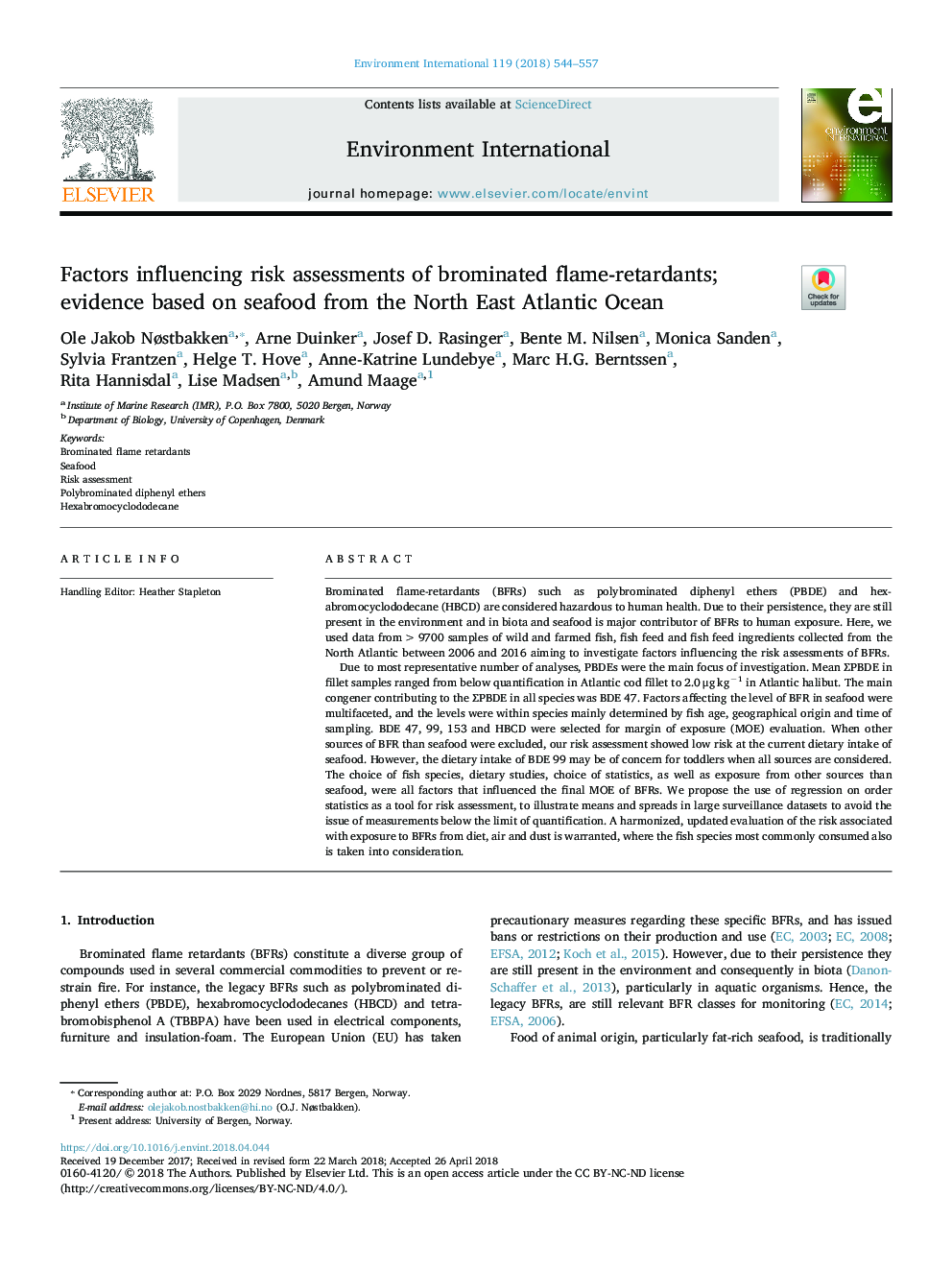| Article ID | Journal | Published Year | Pages | File Type |
|---|---|---|---|---|
| 8855227 | Environment International | 2018 | 14 Pages |
Abstract
Due to most representative number of analyses, PBDEs were the main focus of investigation. Mean âPBDE in fillet samples ranged from below quantification in Atlantic cod fillet to 2.0â¯Î¼gâ¯kgâ1 in Atlantic halibut. The main congener contributing to the âPBDE in all species was BDE 47. Factors affecting the level of BFR in seafood were multifaceted, and the levels were within species mainly determined by fish age, geographical origin and time of sampling. BDE 47, 99, 153 and HBCD were selected for margin of exposure (MOE) evaluation. When other sources of BFR than seafood were excluded, our risk assessment showed low risk at the current dietary intake of seafood. However, the dietary intake of BDE 99 may be of concern for toddlers when all sources are considered. The choice of fish species, dietary studies, choice of statistics, as well as exposure from other sources than seafood, were all factors that influenced the final MOE of BFRs. We propose the use of regression on order statistics as a tool for risk assessment, to illustrate means and spreads in large surveillance datasets to avoid the issue of measurements below the limit of quantification. A harmonized, updated evaluation of the risk associated with exposure to BFRs from diet, air and dust is warranted, where the fish species most commonly consumed also is taken into consideration.
Keywords
Related Topics
Life Sciences
Environmental Science
Environmental Chemistry
Authors
Ole Jakob Nøstbakken, Arne Duinker, Josef D. Rasinger, Bente M. Nilsen, Monica Sanden, Sylvia Frantzen, Helge T. Hove, Anne-Katrine Lundebye, Marc H.G. Berntssen, Rita Hannisdal, Lise Madsen, Amund Maage,
